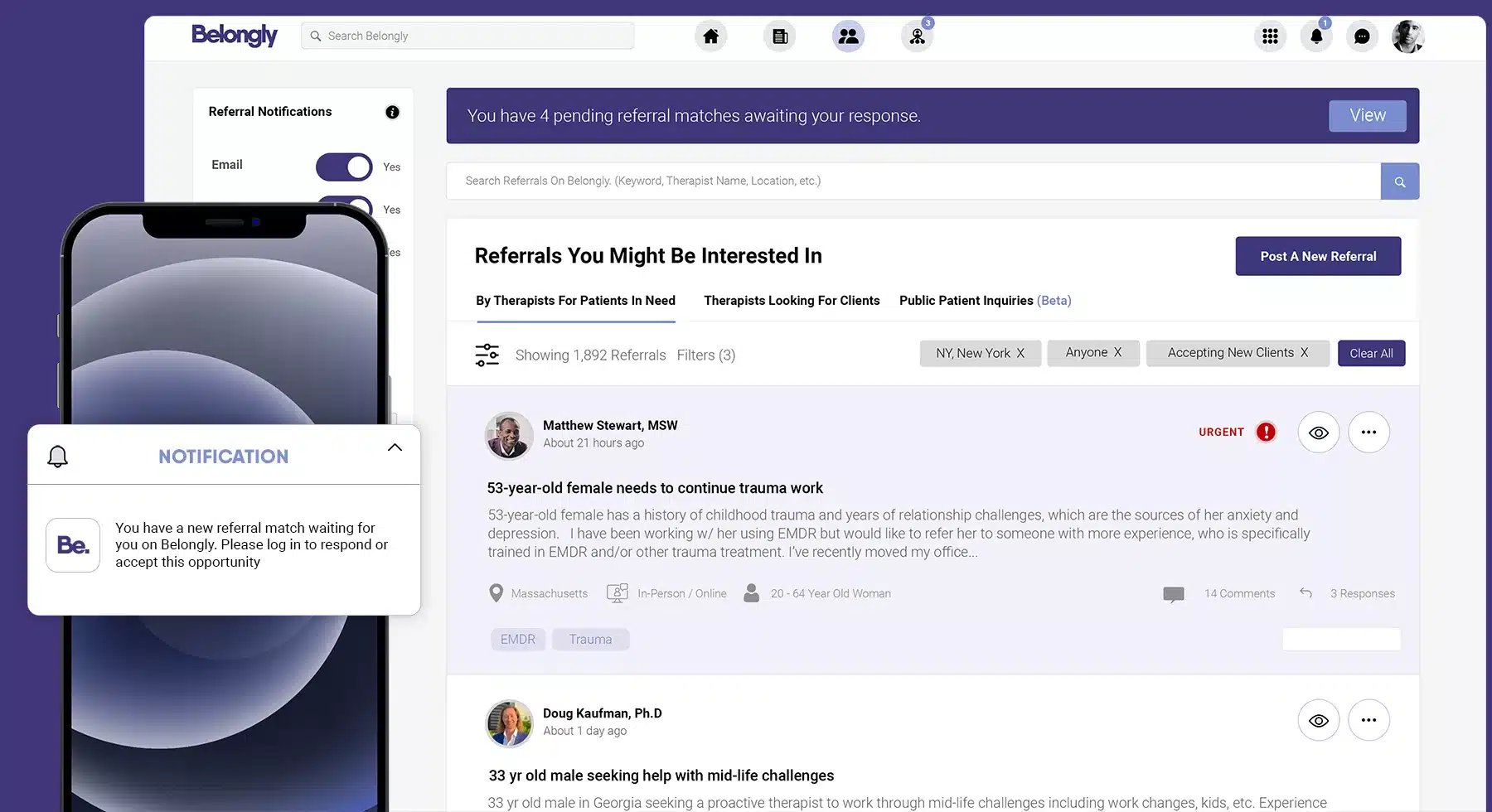Twenty percent of psychotherapy patients end treatment prematurely, against the advice of their providers. When a client terminates too soon, it can feel demoralizing for both client and therapist. In addition, premature dropout is associated with worse outcomes and reduced patient satisfaction.
Luckily, there are things that you can do to increase client retention. By prioritizing client-therapist fit and educating clients about the therapy process, you can reduce dropout and improve outcomes. Creating long-term relationships with clients generates word-of-mouth referrals for a more sustainable and fulfilling practice. Here are 7 strategies for improving client retention:
Patient screening
When you are trying to grow a practice, screening patients can feel counterintuitive. New therapists, in particular, may feel tempted to accept every referral that comes in. However, the alliance between therapist and client is a key determinant of treatment success. To help you determine whether a patient is a good fit, come up with a list of screening questions to ask all new referrals. If the patient needs a level of experience or expertise you can’t provide, use Belongly’s referral service to find a more appropriate provider.
Set appropriate expectations
One of the most common reasons for early termination is patients’ unrealistic expectations. Clients may be looking for a “quick fix” or misunderstand their role in the therapeutic process. Address these misconceptions at the start of treatment. Include both the concrete– for example, your availability for after-hours communication– and the more abstract, such as the process of change. Patients who feel their providers have adequately explained the therapy process are more likely to stay in treatment.
Discuss termination from the outset
Part of setting appropriate expectations is discussing how and when therapy will end. Discuss treatment goals with your patients, as well as how you will know when these goals have been met. Outline your procedure for determining when to terminate, as well as what to expect from the termination process. For more on therapeutic termination, see our blog post here.
Provide early and frequent check-ins
Thirty-five percent of patients drop out after only one session, and 50 percent after three. Checking in with your patients after each session allows them to discuss their reservations, feelings about treatment, and perceived progression. Clients are often hesitant to provide negative feedback to therapists. Instead of letting you know they are feeling dissatisfied, they might “ghost” you instead. By inviting them to express their feelings about therapy, you can head off problems early, foster trust, and prevent dropout.
Focus on relationship-building vs. therapeutic technique
It’s easy to get caught up in a “fix it” mentality, especially if you are concerned about client retention. However, research shows that the relationship between therapist and client is crucial for positive treatment outcomes. Among other things, relationship-building involves creating a safe and supportive environment where clients feel comfortable sharing their thoughts and feelings. Here are some tips for creating a successful therapeutic alliance:
- Focus on exploration and understanding instead of action
- Encourage emotional expression as opposed to fact-sharing
- Use humor where appropriate
- Validate what the patient is going through
- Demonstrate empathy with both words and body language
Include clients in treatment planning
Research shows that including patients in the treatment planning process increases retention. Moreover, clients who participate in goal-setting are more likely to feel satisfied with their treatment progress. By asking clients what they hope to achieve and what steps they need to take to get there, you can help your clients feel more invested, engaged, and committed to treatment.
Monitor and discuss treatment progress
If you don’t have a system in place to monitor your patient’s progress, it’s impossible to know whether treatment is effective or adjustments are needed. Therapists sometimes assume that they will simply “know” if their patients are getting better, but research suggests that therapists aren’t always the best judges when it comes to patient progress. Regularly monitoring and discussing patient progress creates a collaborative relationship that increases client satisfaction and retention.
Keep Reading
Want more? Here are some other blog posts you might be interested in.










